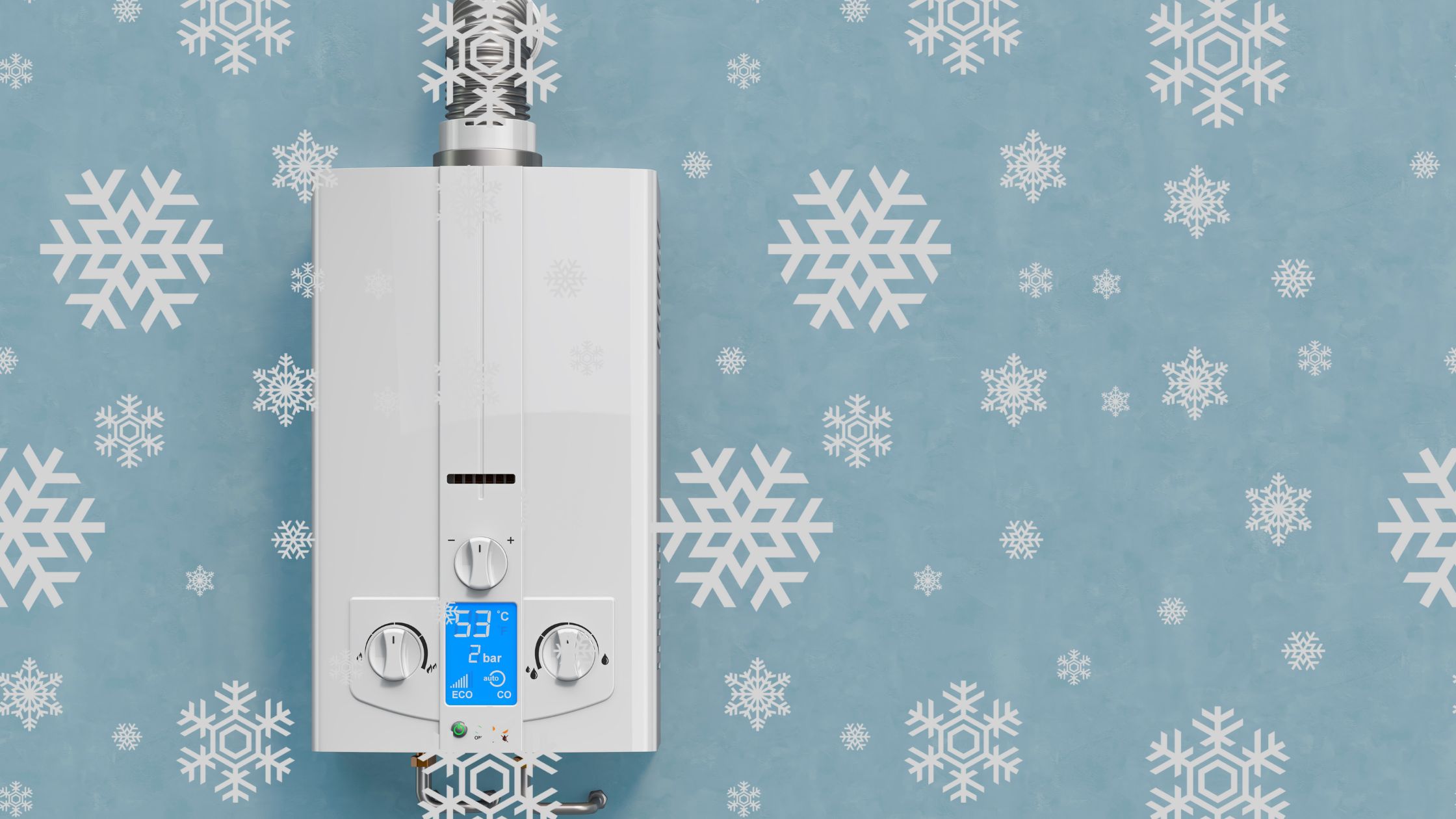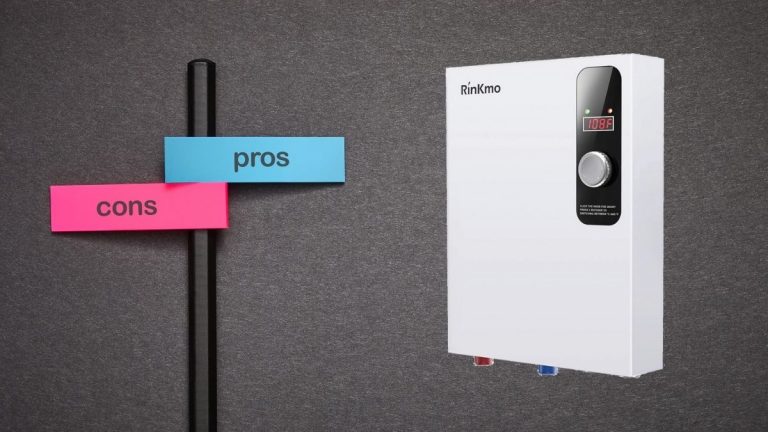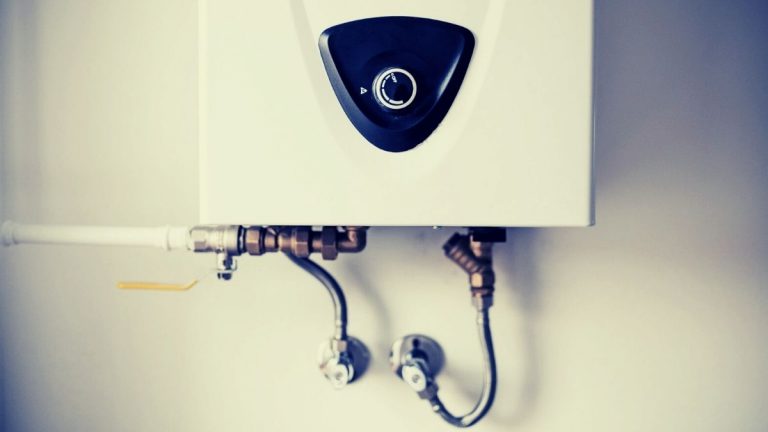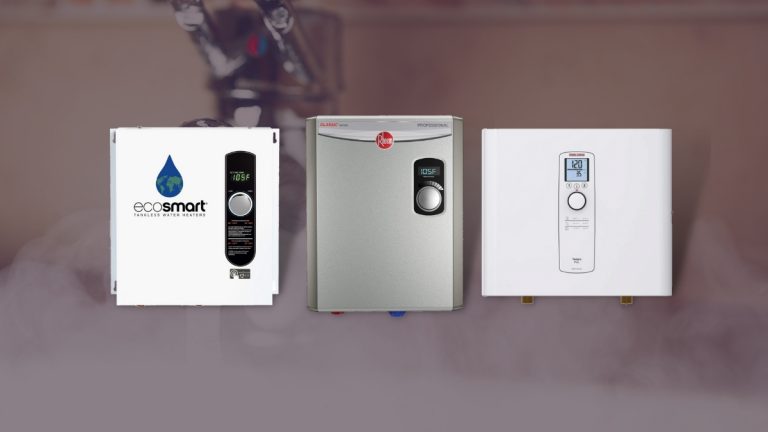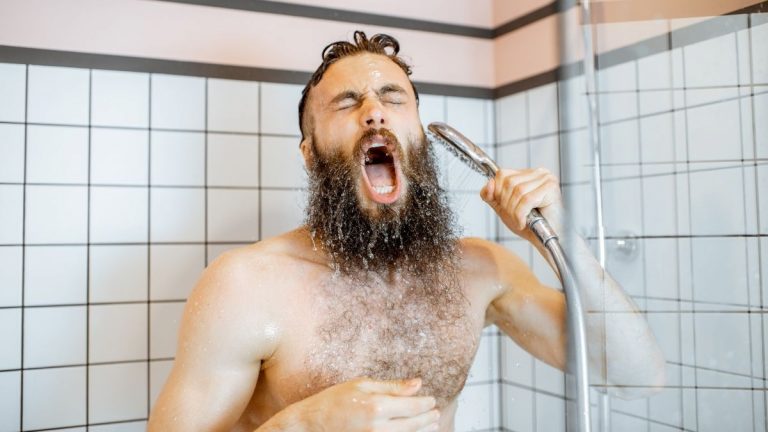Guide to Winterize Gas/Electric Tankless Water Heater
Need help preparing for winter? This step-by-step guide will tell you how to winterize a tankless outdoor/indoor or RV water heater easily, so keep reading!
While some modern gas tankless water heaters have built-in freeze protection, they only protect their internal components. And it may not be as effective for regions where the temperature stays below zero most of the year.
When water freezes, it expands and can cause severe damage to your tankless water heater and the water pipelines. That’s why it’s crucial to winterize your heater.
This complete insulation procedure isn’t rocket science, so follow these easy steps, and your plumbing will be fine all winter.
The benefits of winterizing a tankless water heating system
Winterizing your tankless water heater has several benefits:
- It will protect your water heating system from freezing and bursting and keep the uninterrupted hot water flowing all winter long.
- It will help contain rust and corrosion inside the unit.
- Winterizing prolongs your heater’s life by slowing sediment buildup and scale formation.
With that said, let’s move over to how to achieve winterization of your heating system.
How to winterize an outdoor tankless water heater
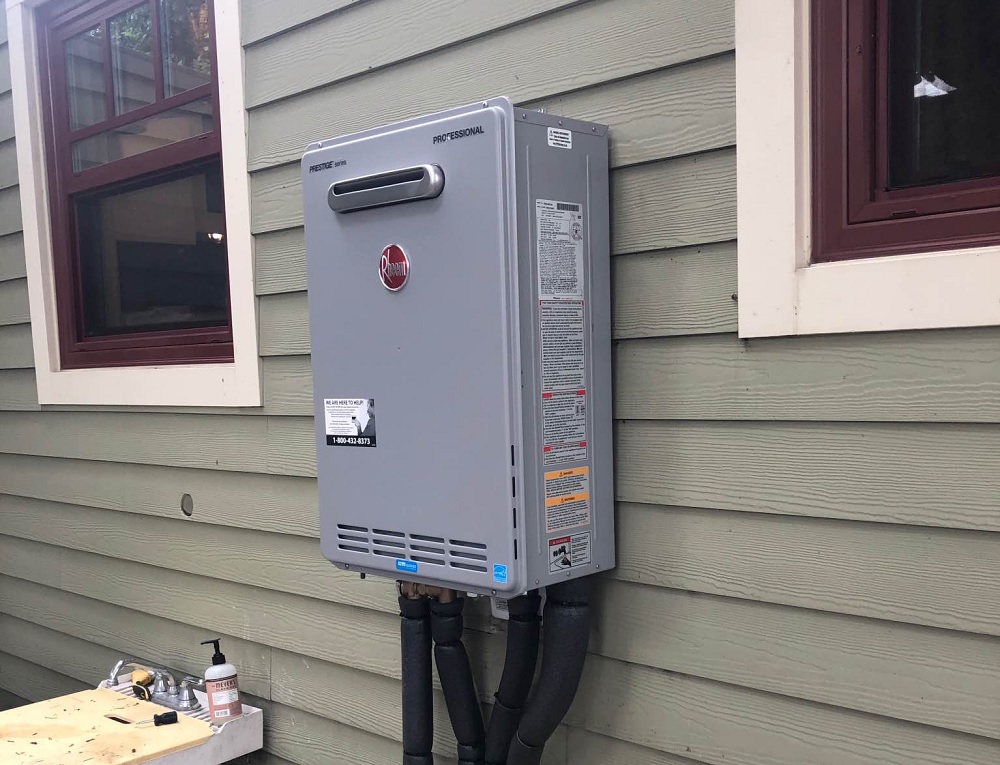
Outdoor water heaters are probably one of the most weather-affected systems. As such, extra care should be taken of it in winter. So if you have an outdoor unit, winterizing is vital to keep it from freezing and bursting in cold weather.
Here are the steps to follow to achieve just that:
- First, turn off the electrical power to the water heater by unplugging the power cord.
- Turn off the gas supply line or main valve.
- Drain the water from the unit by opening the drain valve and connecting a garden hose to it.
- Flush out the system with fresh water to remove any sediment or dirt buildup.
- If you have a dual or concentric venting system, make sure the vent pipes are facing away from the wind direction.
- Some manufacturers recommend using compressed air to blow short bursts through the inlet connection to ensure no water remains inside the heater.
- You may want to use backdraft reducer for gas heaters. When the furnace draws in air from the vent pipe, it causes the entry of unwanted cold air (negative draft) into the system, which then freezes the water in the heat exchanger. You can use the backdraft reducer that shuts the internal flapper to prevent this negative draft.
- If the temperatures drop further, you can open the hot water tap to keep a small stream running.
- Turn on valves and plugs in.
- Reconnect the power cord and turn on the gas supply.
- Use the heat tape and insulation to protect the exposed pipes from freezing.
By following these simple steps, you can winterize your outdoor tankless heaters, enjoy uninterrupted hot water and prevent it from freezing and bursting in cold weather.
How to winterize an indoor tankless water heater
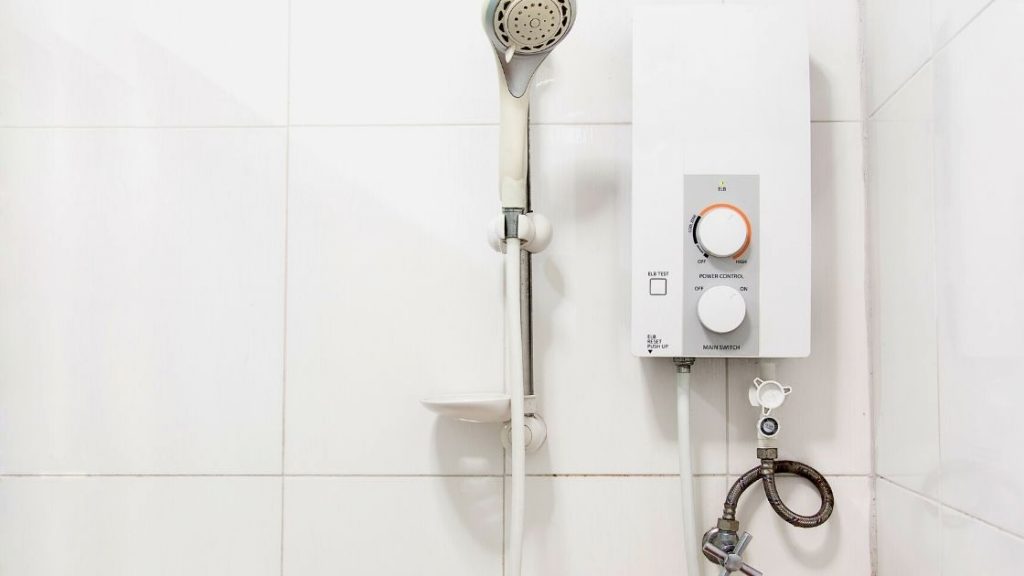
Although outdoor units are more vulnerable to weather, their indoor counterparts might also freeze in extreme weather and interrupt your hot water. As such, winterizing your indoor unit is also a must.
Here are the steps to winterize your indoor tankless heater:
- If you have a gas-fired unit, turn off the main gas supply valve to prevent leaks.
- For electric tankless water heater, unplug the power cord from the outlet.
- Drain all the water from the unit by opening the drain valve.
- Remove any sediments and scales via the water heater flushing method.
- Once the tankless unit is completely dry, close all the valves and turn on the electrical supply.
- Use heat tapes to prevent exposed waterlines from freezing.
- You are all set for winter.
By winterizing your indoor tankless unit, you can safeguard it from freezing temperatures and maintain a steady hot water supply all winter.
How to winterize a tankless camper/RV water system

If you have a tankless water heater in your RV, keeping it warm is vital to prevent freezing and damaging the unit. Winterizing an RV heater is a relatively simple process.
The things you will need for this process includes siphon, water pump, and few gallons of non-toxic anti-freeze.
Here are easy steps to winterize a tankless RV water heater system:
- First off, remove and bypass if you have any water filter in-line. Drain and flush water storing tank of your RV. Use wand if it don’t have built flushing system.
- Open all hot and cold water fixtures, including that in toilet. You can also use water pump and connect it to lower water line point to extract all water from your plumbing line.
- Close all fixtures opened in step 2.
- Connect the intake siphon to RV’s antifreeze intake and pour in the antifreeze mixture. Be sure to use a non-toxic antifreeze like propylene glycol.
- Open all of the faucets in your RV and run the antifreeze through the entire system.
- Turn off the antifreeze supply and close all the faucets in your RV.
- Disconnect the propylene glycol mixture from your RV’s water inlet.
- Done. You have winterized your RV tankless water heater.
Refer to this guide for switch from conventional RV tank water heater to tankless unit.
Winterizing water lines
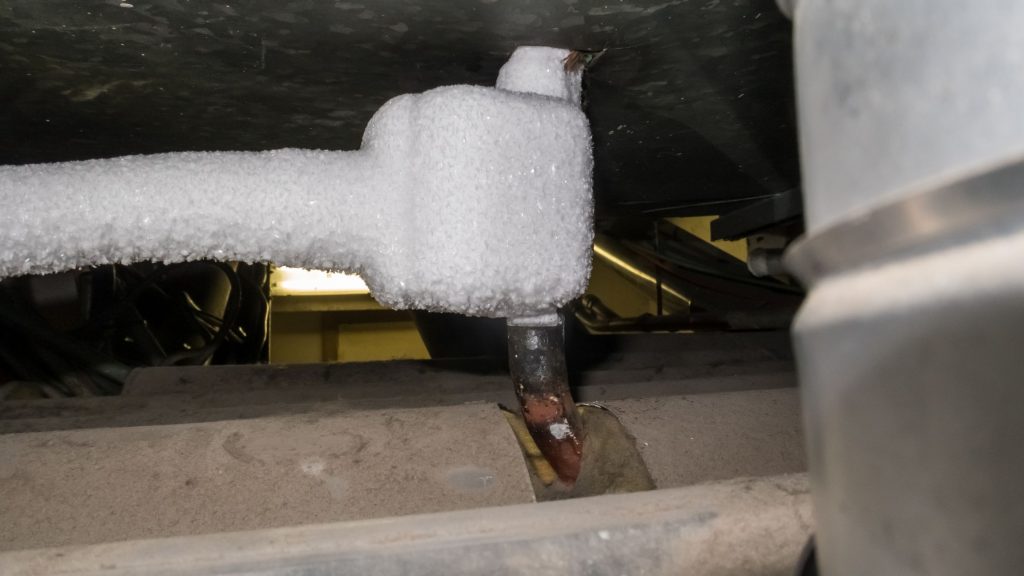
Water pipes can freeze during winter, which can cause water damage to your home. It’s essential to winterize your water lines to prevent this from happening. Here is how to winterize your water lines:
- Locate the main water shut-off valve for your home to stop the water supply. It is usually located where the water line enters your home.
- Open all of the faucets in your home and allow them to run until they are clear of any remaining water.
- Install heat tape or thermostatically controlled heat cables on your water lines. Make sure the heat tape or cables are plugged in and turned on.
- Re-open the main water shut-off valve and allow the water to flow through the heat tape or cables.
- Close all of the faucets in your home and allow the water to run for a few minutes to flush out any remaining water.
- Test all of the faucets in your home for leaks. If there are any leaks, repair them immediately.
- Done. Enjoy your winter-protected home water heating system.
Tips for maintaining a tankless water heater during winter months

- Keep your tankless water heater clean by regularly removing any sediments or sludge from the system.
- Inspect the water heater and heat exchanger for any signs of rust, corrosion, or cracks and fix or replace them if necessary. It will help prevent further damage and ensure that your heater is functioning correctly.
- Ensure all valves are properly closed and the power supply is turned off when not in use.
- Check the insulation around your tankless heater to ensure it is still in good condition and provides enough insulation.
- Wrap the unit in an insulating material like a heavy blanket or a comforter to keep it warm.
- Keep an eye on the weather forecast, and make sure to winterize your heater when temperatures are expected to drop below freezing.
- Close the main supply and drain all the taps and hot water faucets to drain all water from your plumbing lines when you plan not to draw water for long.
- In case of a power outage, you must drain the water heater to prevent damage.
- If you live in an area with frequent power outages, it might be a good idea to have a backup generator on hand to keep your tankless water heater running during those times.
By following this maintenance tips you will be assured that you won’t get any water heater surprise problems.
FAQs about winterizing a tankless water heater
Can you put antifreeze in a tankless water heater?
Yes, but avoid putting in the residential tankless water heater. You can add antifreeze to an RV tankless water heater and keep it in it for the whole winter to prevent freezing. However, it’s essential to use the correct type of antifreeze and especially a non-toxic one.
Also, follow the owner’s manual closely. Some types of antifreeze can damage the internal components of your water heater, so it’s best to consult with the manufacturer before adding any winterizing fluid.
Do you need to winterize a tankless RV water heater?
Suppose you are in or heading to the region where the temperatures drop below freezing. In that case, it’s a good idea to winterize your RV heater. It will prevent any damage that freezing temperatures could cause.
How do tankless water heaters handle cold water?
Tankless water heaters have a built-in feature that allows them to modulate the amount of heat they produce based on the incoming water temperature. The heater will automatically adjust when the water is cold to provide less hot water. In frigid weather, it’s possible that the flow of incoming water could be too low for the heater to function at all. If this happens, you’ll need to thaw out the unit before it will work again. Or upgrade to a bigger heater.
Who should winterize tankless water heaters?
Homeowners in colder climates who use tankless water heaters should winterize them before the temperature drops below freezing. It will help prevent any damage that could be caused by the cold weather and can enjoy an undisturbed flow of hot water.
Over to you
Most modern tankless heaters have built-in freeze protection including those from Rinna, Rheem, Navien, and Eccosmart have this feature. But they only protect its own internals. Tankless water heaters are an excellent option for homeowners in colder climates. They don’t have the risk of damage that comes with traditional tank-style water heaters when winter temperatures hit.
However, it’s vital to winterize them properly to ensure they continue functioning correctly during those months. We have outlined some easy-to-practice steps in the above guides to winterize residential and RV water heaters. Follow these tips, and you’ll be able to rest assured of getting a steady stream of hot water to your home all winter long.

